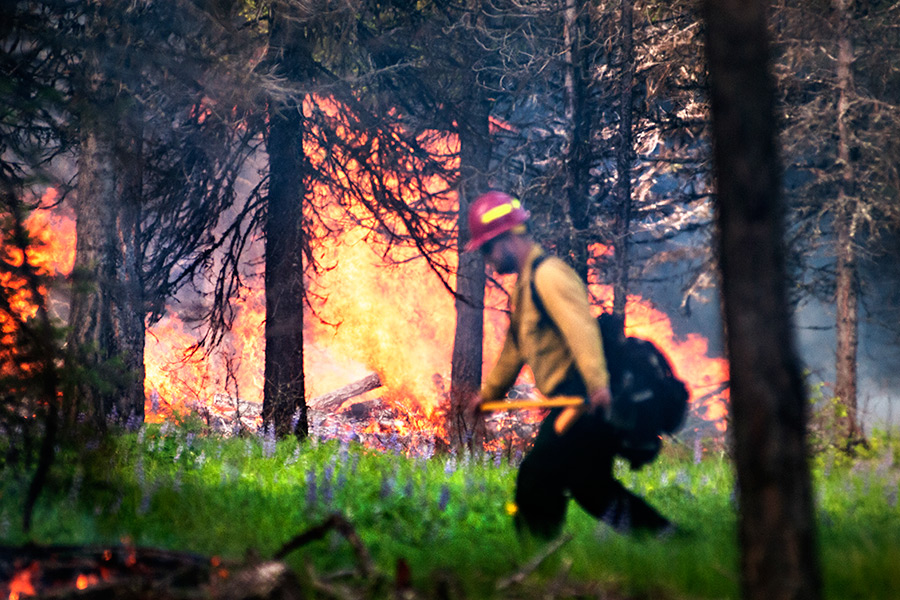The same weather patterns that kept fire season at bay this summer — a dose of cold temperatures and precipitation every week or so — has put a damper on the Flathead National Forest’s plans to set a number of prescribed burns this fall.
“We really thought that we might get a good burn season in, but it just hasn’t materialized yet,” said Flathead National Forest Fire Management Officer Rick Connell. “The burn window gets smaller every day.”
Earlier this fall, the U.S. Forest Service was prepared to ignite a dozen major prescribed burns — ranging anywhere from 10 or 20 acres up to 1,000 acres — along with numerous burn piles across the landscape. While Forest Service employees have been able to burn a few piles, as well as a 100-acre unit near Radnor, west of Olney, Connell said the weather has not cooperated as they hoped.
Prescribed burns have different objectives, including reducing fire danger or helping wildlife. Connell recalled one instance when he was working in Wyoming, where an area was burned so that mountain goats could safely travel from their summer home to their winter home without being bothered by mountain lions that hid behind trees and attacked without warning. In other areas, a prescribed burn can create a natural break between thick forest and a populated area.
Before any prescribed fire is set, the Forest Service does an extensive study to ensure that any proposed project is in compliance with the National Environmental Policy Act, better known as NEPA. The studies can take years and are hundreds of pages long. Once the study has been completed, officials have to wait for just the right conditions to light a prescribed burn. Connell said it has to be dry enough to burn but not windy to avoid a fire getting out of control. Ideally, prescribed burns are set a few days before a rain event. The agency also needs to get approval from the Montana Department of Environmental Quality to ensure a safe air quality in the area. Some years, few fires are set because the conditions aren’t right. The fall of 2019 is quickly turning into one of those years.
Connell said the window for burning is usually gone by November, in part because the days are too short to set an effective fire. If the weather does change and conditions are right to burn, officials hope to set at least one blaze near Whitefish on the slopes of Big Mountain. The objective of the fire would be to reduce the likelihood of a crown fire, reduce stand density, improve mule deer and elk habitat and prepare areas for planting native whitebark pine trees.
“We just have to wait and see what the weather gives us,” he said.
